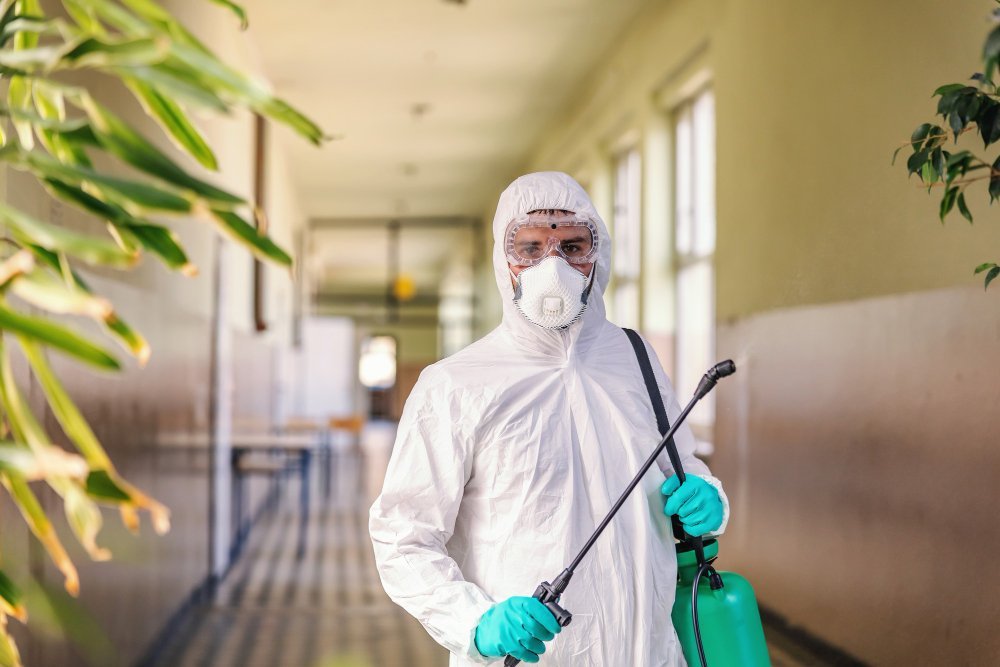Home » Pest Control
Category Archives: Pest Control
The Role of Professional Pest Inspections in Real Estate Transactions
Mice Removal Texas is the practice of keeping pests from harming plants, animals, and structures. This can be done through prevention, suppression, or eradication.
Rodents can damage furniture and cause fires by chewing electrical wires. They also carry diseases such as hantavirus, leptospirosis, and salmonella. Getting rid of clutter can help prevent pests from breeding and hiding in it.

In residential pest control, prevention is a key component to keeping pests away from your home. It starts with eliminating their food, water and shelter sources. Store foods in containers with tight lids, remove garbage regularly and keep trash cans tightly closed, and fix leaky plumbing. Yard maintenance also eliminates food sources, weeds and wood piles where pests hide and breed. And regular inspections help detect pest problems and potential infestations early, enabling preventive measures to be taken.
Another form of prevention is the use of natural enemies of a pest, like predators and parasites, to control it. This is sometimes called biological pest control, and it can include techniques such as releasing natural enemies into the environment to feed on a particular pest or by altering its life cycle (e.g. by introducing sterile males).
Taking steps to limit pests’ access to your property also helps. Sealing entry points, such as cracks and crevices around the foundation of your home, can stop pests from finding their way inside. For a home, this can include caulking, sealing and patching. For a commercial property, this might mean installing rodent-proof screens on doors and windows that are frequently left open.
Another aspect of prevention is the use of landscaping and materials that are resistant to certain pests. For example, planting and using shrubs and bushes that are less attractive to certain insects can help limit insect population levels and their damage to your property.
Other prevention strategies might involve avoiding conditions that favor pests, such as providing an overabundance of food or moisture. This might be accomplished by creating barriers to entry, as with the blocking of eaves and other openings, or by maintaining a clean facility or warehouse and following safe food storage guidelines.
For some pests, such as fleas and cockroaches, preventive methods might not be enough on their own. In this case, pesticides might be used to kill the pests and prevent them from reproducing. Chemicals used in this way are typically targeted at the adult pests and will not harm people, pets or livestock.
Suppression
Pests can cause a variety of problems. Rodents can chew through wires, damage insulation and spread diseases such as salmonella, hantavirus and leptospirosis. Insects such as cockroaches and fleas can create an unpleasant environment for people in offices or retail areas and are a serious health risk to humans with allergies or asthma. Sanitation practices can help prevent or suppress certain pests by improving cleanliness, removing food sources and shelter, and increasing the frequency of garbage pickup. In addition, preventing soil contamination by removing crop residues can help to reduce the carryover of pests from one year to the next.
Pest control professionals are able to provide effective pest treatments. However, the success of any pest treatment depends on a number of factors such as the type of pest and the severity of the infestation. Moreover, it takes time for products to work effectively. Therefore, you must be patient and ensure that any treatments are followed properly to achieve a pest-free environment.
It’s important to hire a professional to conduct any pest control treatments. Professionals have the knowledge and skills to identify the pest and the level of infestation and can recommend the right product for the situation. Furthermore, they know where and how to apply the pesticides for maximum effectiveness.
Moreover, a pest control service can also provide advice on reducing the chances of future infestations. They can help you prevent pests by removing food sources, eliminating water sources and closing off shelter. Additionally, they can suggest ways to improve the sanitation of a property, including regularly disposing of garbage and sealing gaps around doors and windows.
When you notice a problem with pests in your home or business, contact a local exterminator immediately to get rid of them quickly. The longer you let pests live in your space, the more difficult it will be to clean up and the more expensive the treatment will be.
It’s common for pests to recur after a treatment, especially in the first two weeks. This is because the pests are flushed out of their hiding places and are trying to find new ones. This can be frustrating, but it’s vital that you take steps to avoid pests at all costs.
Eradication
Pests are organisms that are harmful to humans, their activities, crops or livestock. They may also damage property or disrupt ecological balances. Pest control involves a range of methods to prevent pests from spreading diseases or contaminating food. These include physical methods such as traps and barriers, biological methods such as predators and parasites, and chemical methods such as pesticides. Pest control professionals use a combination of these techniques, tailoring their approach to the type of pest they are controlling.
Using baits and traps for rodents and cockroaches is an effective way to get rid of them without the need for chemicals. These methods are generally less hazardous to people and the environment than the use of pesticides, which can be very dangerous if not used correctly. However, it is important to choose the right trap or bait for the pest you are trying to eradicate – some pests are resistant to certain types of bait or poisons.
The most common method of eradication is to apply targeted pesticides, which kill the pests by poisoning them or blocking their ability to reproduce. This is usually the fastest way to eradicate pests, although it is not always the most effective. In some cases, the pests may simply be too strong or there may be a genetic mutation that makes them resistant to the pesticide.
Another way to eradicate pests is by introducing natural enemies into the area. This method works best for slow-moving organisms like weeds and insects, but is not suitable for more mobile pests like rodents or birds. It can also be difficult to monitor and requires a great deal of patience, as the success of this approach depends on the ability of the natural enemy to find the pests.
A final method of eradication is to make the environment uninhabitable or unwelcoming to the pests. This can be done by building a barrier that keeps the pests out, or by using distraction elements to draw them away from the target crop. For example, a farmer might plant a field of zinnias to attract Japanese beetles and then exterminate them with a pesticide.
Monitoring
Pest monitoring is the process of regularly inspecting facilities and evaluating whether a pest infestation has reached a threshold that requires control. It involves identifying and analyzing the data collected from inspections, traps, bait stations and other monitoring tools. It also includes determining the most effective control measures and adjusting them accordingly. Some companies choose to outsource their pest monitoring while others prefer to do it in-house.
Identification of the pest is the first step in developing an effective pest control strategy. The pest’s lifestyle, feeding habits, reproductive capacity and other behavioral traits are all taken into account to determine the appropriate control tactics. The type of pesticide used also depends on its level of toxicity and other environmental concerns. The pesticide must be selected carefully and applied in such a way as to minimize the possibility of resistance development.
A pest log can help identify the areas in a facility that are most vulnerable to pests. Keeping food storage areas and garbage receptacles clean can also reduce the likelihood of pest infestation. In addition, a physical exclusion program may include the use of screens over windows and doors and the sealing of cracks and gaps.
Once a pest infestation has reached a threshold, it is important to take action promptly before it gets out of hand. This can be accomplished by reducing the pest population outside of the facility, preventing pests from entering or eliminating conducive interior conditions. It is also essential to establish an action threshold for the facility and monitor the pests’ population levels on a constant basis to ensure that it does not exceed this level.
Insects, insect-like pests, mollusks and vertebrate pests can be monitored by visual inspection or trapping, while weed pests are usually monitored by sampling vegetation. Monitoring can also involve checking environmental conditions such as temperature and moisture levels, especially humidity. These factors can impact the behavior of some pests and may indicate when a pest infestation is about to reach a threshold level.
Some pests are not susceptible to non-chemical methods of control and will require the use of chemical controls. However, it is always desirable to use the least toxic control method available when possible. In many cases, this will involve using non-chemical preventative strategies such as sanitary maintenance, addressing the sources of food and water for pests and implementing physical exclusion to prevent entry points into a structure.


